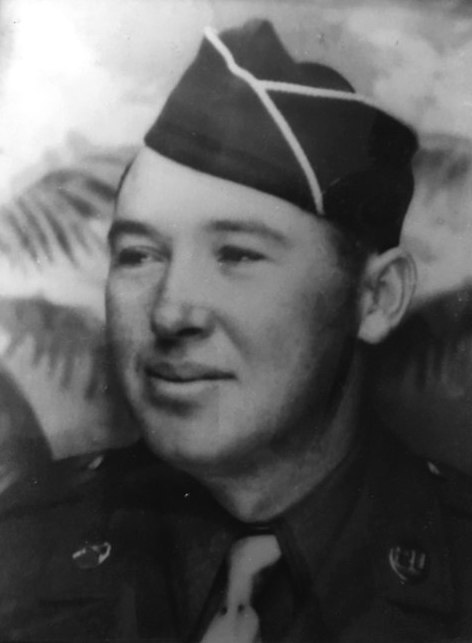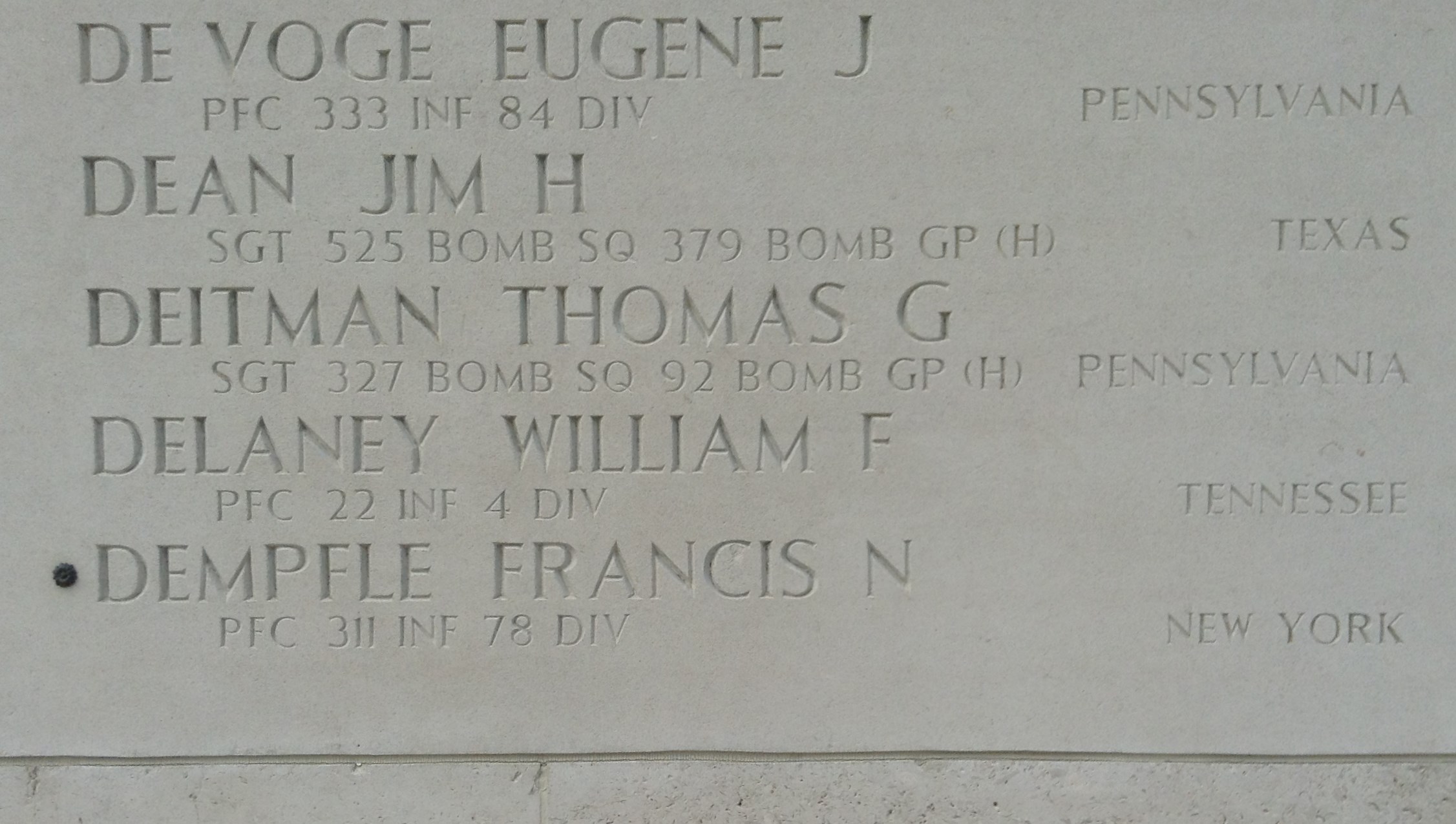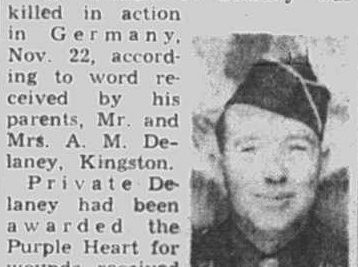KINGSTON, Tennessee — The remains of a World War II soldier from Tennessee who was killed in Germany have been identified, military officials say.
Army Pfc. William F. Delaney of Kingston had been declared unrecoverable before dental and DNA analysis identified his remains, Defense Department officials said. Delaney, 24, was fighting with the 4th Infantry Division when his battalion launched an artillery strike against German soldiers near Grosshau in the Hürtgen Forest on Nov. 22, 1944. An enemy artillery shell struck Delaney’s foxhole, and he died before he could be medically evacuated.
His remains weren’t recovered then because of ongoing combat operations, according to a release from the Defense POW/MIA Accounting Agency. He was among hundreds of soldiers still missing from combat in the Hürtgen Forest when the war ended in 1945.
In 1947, a local resident, Siegfried Glassen, found a set of remains that he thought were of an American soldier, and the remains were sent to the American Graves Registration Command. But the remains could not be identified and they were buried in Ardennes American Cemetery.
Decades later, after an analysis of military records and AGRC documents, the remains were disinterred in 2017 and sent to DPAA for analysis. There the scientists used a range of evidence: dental, anthropological, material as well as mitochondrial DNA analysis.
They discovered that the remains that had been designated years ago as “X-5425 Neuville” were those of Delaney. He was officially accounted for in December. The grave where he was interred as an “unknown” was “meticulously cared for over the past 70 years by the American Battle Monuments Commission,” the DPAA release said.
Officials say more than 72,000 U.S. service members remain unaccounted for from World War II.
Fallen Roane County soldier comes home
Matt Lakin
Knoxville News Sentinel USA TODAY NETWORK – TENNESSEE
May 22, 2019
The body of a fallen East Tennessee soldier came home Wednesday, nearly 75 years after his death in World War II. He’ll be buried in his hometown on Memorial Day.
Army Pfc. William Frank Delaney of Kingston died Nov. 22, 1944, when his infantry regiment clashed with Nazi soldiers near Grosshau in Germany’s Hurtgen Forest. An artillery shell struck the 24-year-old’s foxhole, killing him. His body — and the bodies of hundreds of other Allied soldiers — couldn’t be recovered at the time.
A German citizen discovered Delaney’s remains and turned them over to U.S. forces. The remains couldn’t be identified with the techniques of the day and were buried at the Ardennes American Cemetery in Belgium.
Delaney’s remains lay there for the next six decades. Then in 2017, the U.S. Defense Department’s POW/MIA Accounting Agency dug up the remains and began DNA testing, based on indications in records the body might have been Delaney’s. Officials confirmed the match in December, according to the agency. Delaney’s remains flew into McGhee Tyson Airport in Knoxville just before 7 p.m. for transport to Kingston. He’ll be buried there on Memorial Day in Lawnville Cemetery after a funeral service at Young’s Chapel Cumberland Presbyterian Church on Lawnville Road.
“Finally, Pvt. Delaney will be laid to rest in Tennessee, under a headstone with his name, in the same cemetery where his parents are laid to rest,” said Courtney Rogers,state commissioner ofveterans services. “We extend our deepest condolences and support to his family and look forward to welcoming this Tennessee hero home.”
Gov. Bill Lee has declared a day of mourning from sunrise to sunset on Sunday in Delaney’s memory. “This young soldier’s bravery and sacrifice should always be remembered, and I’m glad we can honor him and his family today,’ Lee said.




